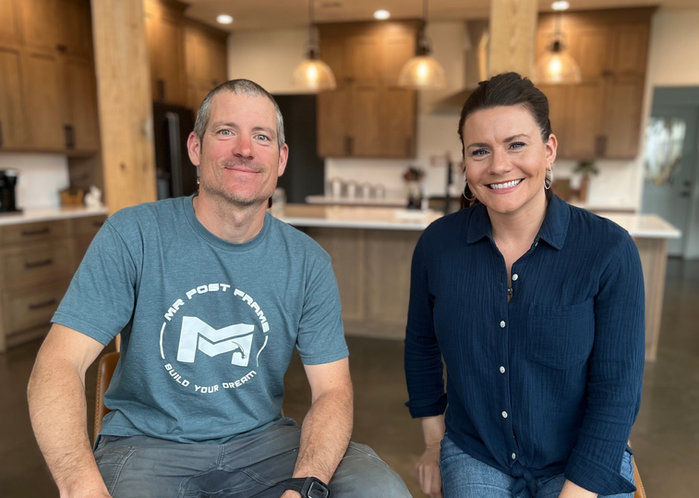
Welcome back to MR Post Frame. We are back here at the Remington Build. I'm currently working with this trim, specifically designed to cover the grade board and complement the siding. In my opinion, it adds a much cleaner look. When you bring in dirt, the grade board and Tyvek are hidden, enhancing the overall appearance of the exterior of your barndominium.
Now, let's talk about Wayne's coating. If you're running the Wayne's coating along the bottom before the top, precision in making cuts is crucial. I learned the hard way that poorly executed cuts allow flexing and movement. When going around windows, ensure a clean cut, and use a supporting technique on the other side to maintain alignment.

Moving on to door trim, our approach involves running a bead of silicone along the brick molding and placing the J trim flush with the top. This creates a seamless foundation for steel installation. As for metal corners, careful consideration of the outside corners is necessary. Over-tightening screws on the side can cause oil canning, so back them off slightly for a balanced result.
For FJ trim (soffit), we determine its placement by measuring down from the fascia board. This ensures a precise and aligned positioning. When organizing metal sheets, efficiency is key. We're mindful of handling the first full sheet, ensuring it's level before proceeding.
During roof trim installation, we prioritize a level first piece to establish a solid foundation. Precision is crucial to avoid issues down the line. Corner trims require careful tightening to prevent structural integrity compromise.

Wrapping up, there's a sliding door awaiting installation. Once that's in place, we'll complete the steel work. Excitingly, the ceilings are still open, and steel ceilings are planned for the future. Next week, we're going to be framing up the interior, and when we do that, we will frame up the porches as well. We find it easier to let the electrician come before we get the steel ceiling so that he can get the lights just where he wants them and then we can come back through and make custom holes to fit the lights. I just find it's easier to run the wire, then come in, put the ceiling in, make custom holes for them, and then they can hook their wiring up.
We're thrilled with the progress using metal from Delta Metals. Their trims, with half-inch hems, make the assembly super smooth. Looking ahead, we have a 60 by 80 project on the horizon, which promises to be an exciting endeavor. As we continue with these builds, we appreciate your questions and engagement. Stay tuned for more insights in our Patreon build group. We appreciate your support and hope you found this post helpful! For more in depth details check out our YouTube video of this entire process!
Thank you,
MR Post Frame

Patreon Group:
Interested in tackling your build on your own? If you want to explore the possibility of being your GC or self-building, our Patreon membership is for you! It's a community of like-minded people offering support, discounts, Q/A, and more.